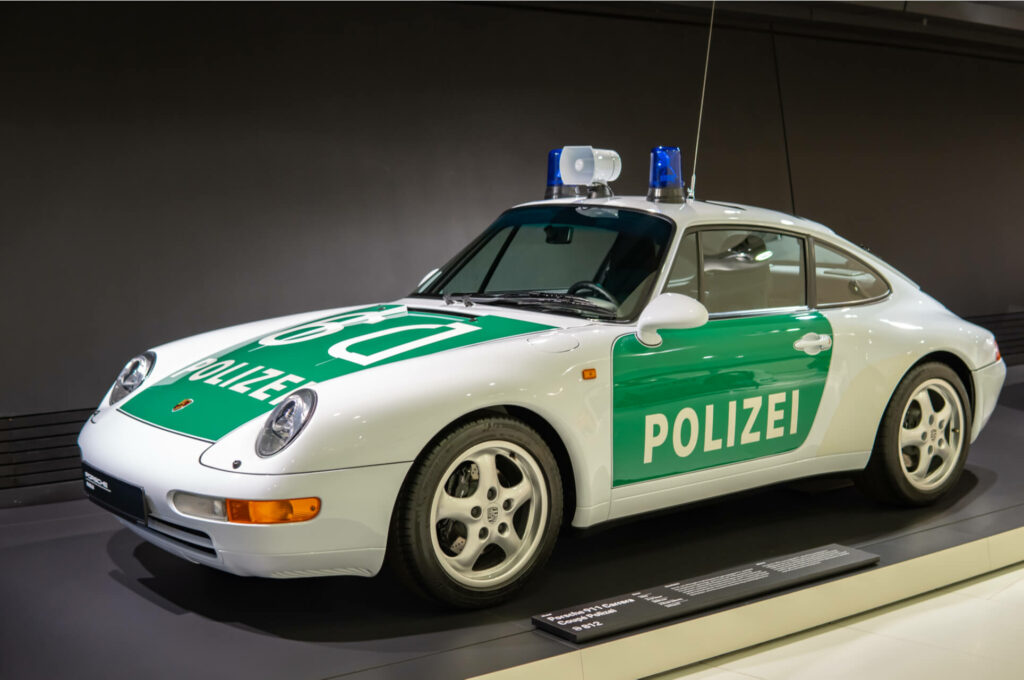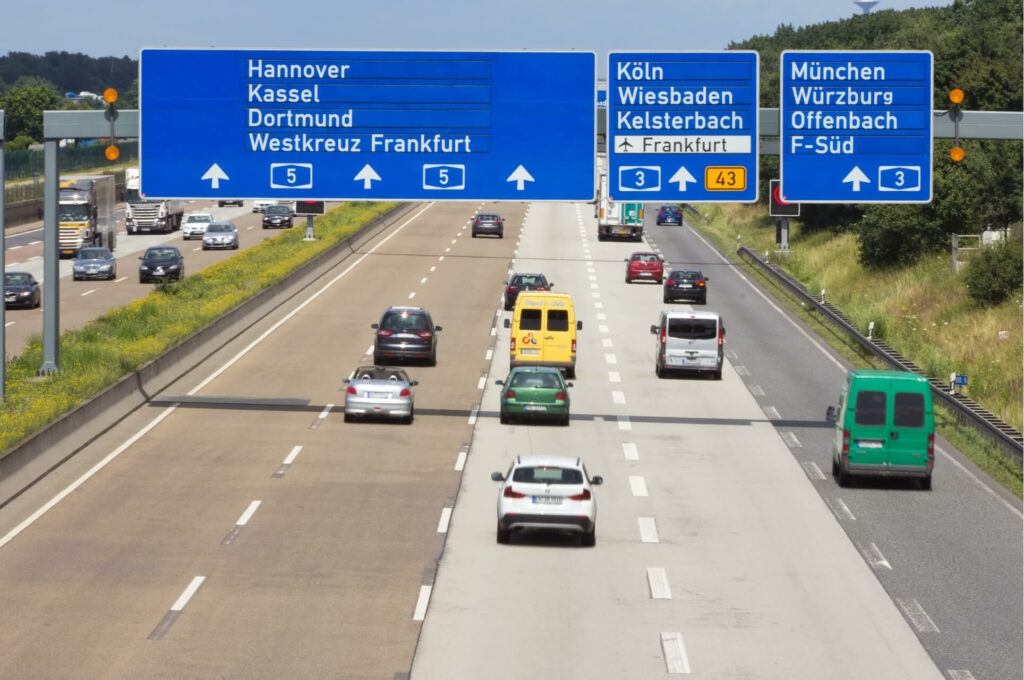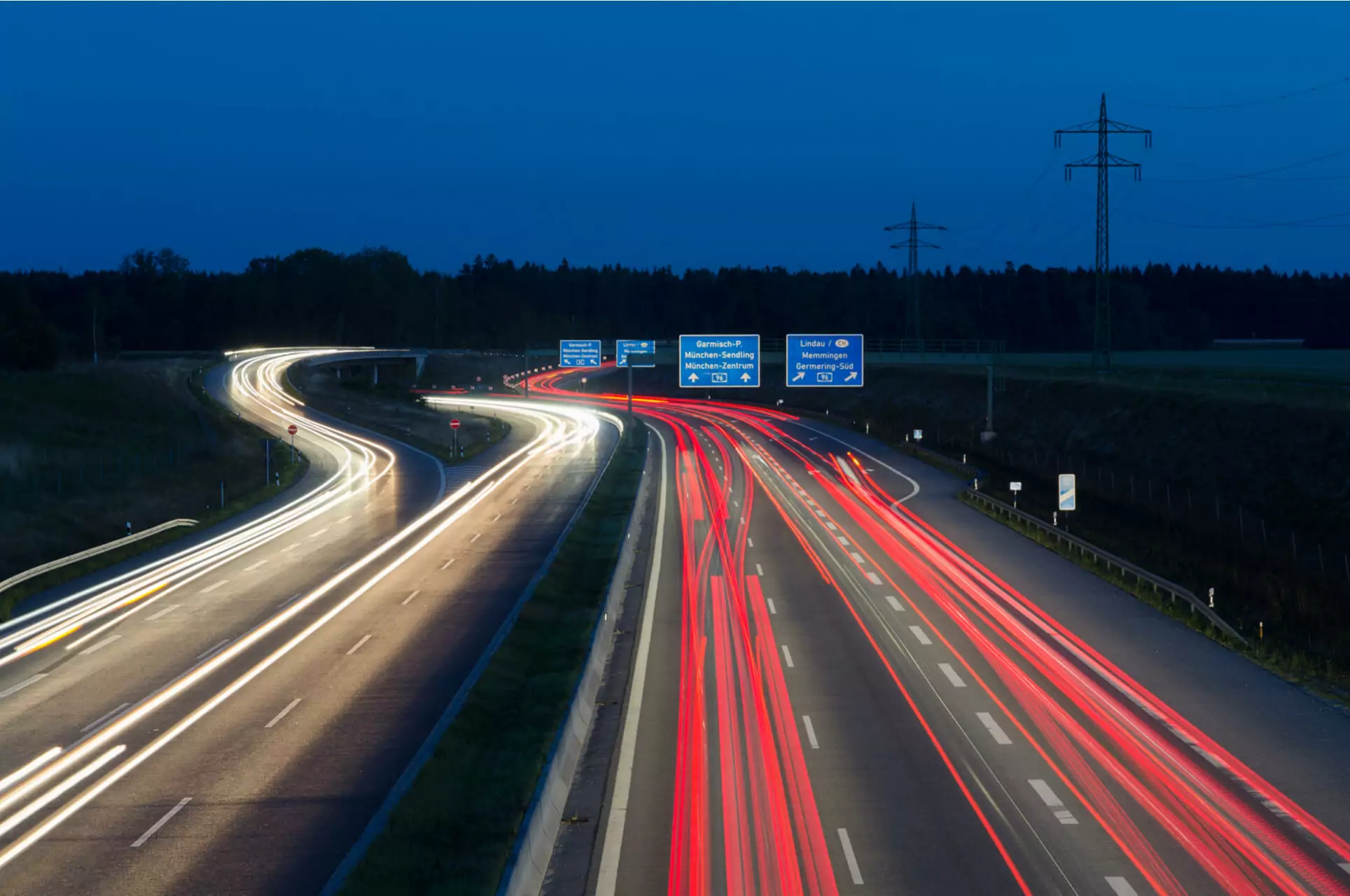In 1920s Germany, the government came up with the idea of a federally-controlled network of car-only roads that would stretch across the whole country. The idea might seem simple to us today, with our own highways running the length and breadth of the US, but for the time and place, this was still a novel idea. The idea was to become the ‘Bundesautobahn’, which translated into English means ‘Federal Automobile Track.’
But construction was slow, and the first section of the new ‘Autobahn’ didn’t open until 1935. This was due in no small part to then-Chancellor, Adolf Hitler, who was a huge supporter of the project. When it opened, this stretch of Autobahn was the first limited-access, high-speed road network in the world. For comparison, the US Interstate system would be defined 4 years later, in 1939, and federally authorized in 1944.
Work slowed during WWII and many of the already-completed sections were damaged, but they were rebuilt after the war and construction and maintenance of the network has continued through to today.
IS THERE REALLY NO SPEED LIMIT?
While it’s true that many sections of Autobahn have no speed limit, this is not the case for the entire network. About a third of the system has a permanent, posted speed limit. About a sixth of the network has ‘variable speed limits’, which means that there are limits when there is bad weather or traffic congestion. These zones tend to be closer to urban areas where traffic is heavier. Also, larger vehicles such as trucks and buses, along with cars pulling trailers, are subject to speed limits that don’t apply to regular cars.
But about half the Autobahn has no speed limit at all. While there is an ‘advisory’ limit of 130kmph (81 mph), cars aren’t required to stay under this soft limit. A quick search on YouTube will show you videos of drivers hitting over 300kmph (186 mph) on these public roads. In fact, the fastest speed ever officially recorded on the autobahn was set by famed German racing driver Rudolf Caracciola in 1938 when he reached 432.7 km/h (268 mph) in the Mercedes-Benz W125 Rekordwagen. However, this was performed on a closed section of road.
ARE THEY POLICED AT ALL?

There may not be speed limits on large portions of the Autobahn, but that doesn’t mean that anything goes. Drivers can still be pulled over for reckless driving, so while speed is tolerated, the driver needs to remain in good control of their vehicle. In fact, Germany formed a highway patrol unit called the Autobahnpolizei, specifically to patrol the Autobahn.
As you can imagine, in order to be of any use at all, the Autobahnpolizei need high-performance cars in order to keep up with whoever they may be chasing. Over the years they have used vehicles such as the Porsche 356B Cabrio, BMW Isetta, BMW M3, TechArt Porsche 911 Carrera S, Brabus Mercedes-Benz CLS V12, ABT Audi R8 GTR and even a Chevrolet Corvette Stingray.
ARE THEY SAFE?
The question of safety on the Autobahn depends very much on who you’re talking to. In 2019, the German Federal Transport Minister, Andreas Scheuer, claimed that Germany’s roads were ‘the safest in the world.’ There are reportedly 1.74 deaths per 1 million vehicle kilometers driven on the Autobahn. For reference, that number is 3.38 in the US, about double, and 1.16 in the UK. But this number doesn’t take into account the many differences between countries such as geography, economy, traffic growth, highway system size, degree of urbanization and motorization, and so on.
And perhaps the people most skeptical about the safety of the Autobahn are the Germans themselves. A poll performed in October 2021 by German public broadcaster ARD showed that 60% of Germans agree there should be a speed limit of at least 130 kilometers per hour (81 mph) across the entire Autobahn.
IT MAY NOT LAST FOREVER

The relatively low number of fatalities on the Autobahn is a testament to what active policing can do, even under extreme conditions. But, still, accidents do happen on the Autobahn as they happen on roads all over the world. And with the high speeds involved, they tend to be tragic and spectacular. In 2009, for example, there was a single pile-up that involved 259 cars, resulting in 66 injuries and about USD $2 million in damages.
In almost every accident on the Autobahn, excessive speeding is cited as a major factor. With public support within Germany moving towards safer, speed-limited highways, the unlimited speed Autobahn may soon become a relic of the past.

